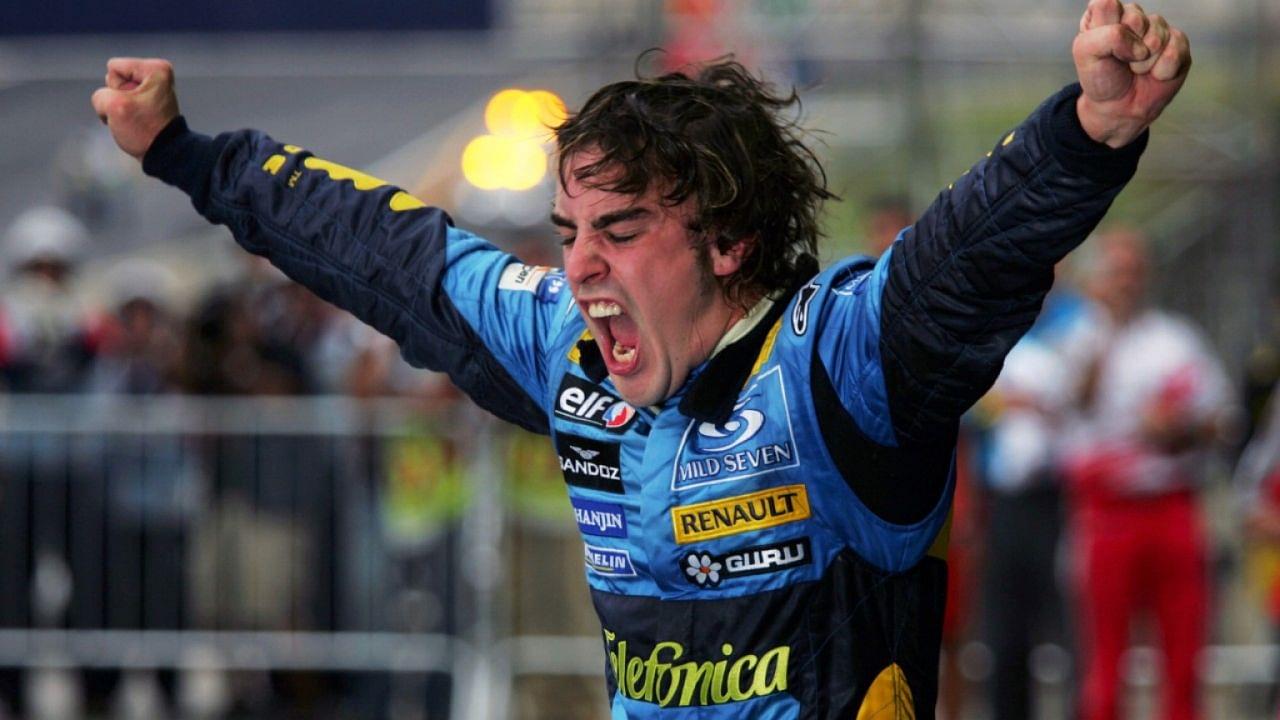In the early 2000s, Michael Schumacher was the most dominant driver in Formula 1. He won five consecutive world championships between the years 2000 and 2004, which solidified his status as an all-time great. Heading into the 2005 season, the German was once again the favorite, but this time he had to cross the hurdle that was Fernando Alonso.
Alonso made his F1 debut back in 2001 and was one of the most talented young drivers at the time. However, he and Renault failed to overcome Ferrari’s dominance until then which was frustrating for both parties. However, the year 2005 would change fortunes at the Enstone-based outfit.
Former astrophysicist Robin Tuluie spoke to Motorsport and revealed how he played a huge role in helping Alonso win his two world titles. He brought about a revolutionary change to the car’s design, that presented Alonso with an unprecedented advantage over Schumacher in the 2005 and 2006 seasons.
Also read: Michael Schumacher’s Former Teammate Once Wanted to Humiliate Ferrari Because of Team Orders
How did Tuluie’s innovation help Fernando Alonso win?
Tuluie was one of the smartest minds in F1 and was asked to work on unique challenges for the teams he was a part of. When he arrived at Renault, the management asked him to fix a problem with the wind tunnel model. He saw that it was bouncing a lot when it was speeding, which made him realize that he needed a ‘mass damper’.
Tuluie tried it out on a simulation that seemed to stabilize the runnings and that was when Bob Bell, Renault’s technical director asked him if he could install something similar in a car. At the time, there was nothing illegal about this, although it wasn’t considered to be a major factor.
“YEEEAAAAH! COME ON!”
Watch Alonso’s 2005 title triumph & many more #BrazilGP highlights >> https://t.co/jf6d7RiaAQ pic.twitter.com/QLWyqdGtTo
— Formula 1 (@F1) November 10, 2015
The team ended up having the damper of Alonso’s car by turning it sideways, which made the car three-tenths of a second quicker. Alonso ended up getting a huge advantage over Schumacher in 2005 and won his first ever world championship because of Tuluie’s moment of genius.
Also read: Ex-F1 Driver Believes Lewis Hamilton Will Beat George Russell With “Different Approach”
Reason behind Alonso’s title success was deemed illegal
Alonso was able to win the 2005 Title by finishing ahead of the legendary seven-time world champion Schumacher. He also got off to a great start in 2006 but midway into the season, the FIA deemed the design of Alonso’s Renault to be illegal.
“In the middle of 2006 it was a big problem,” he said. “By a process only known to the FIA it was declared illegal because it moved and had an effect on steadying the car.”
Tuluie insisted that the design was not illegal and it was within the rules. However, the fact that other teams did not have this idea before them meant that this was going to be deemed illegal. Despite the design being declared unfair, Alonso ended up winning the 2006 world championship as well.








